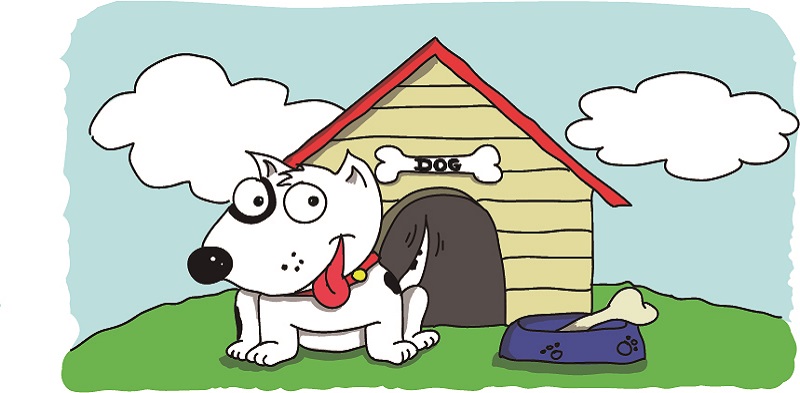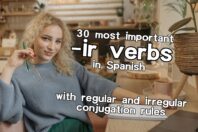De in Spanish Explained Like You’re Five

Get our free email course, Shortcut to Conversational.
Have conversations faster, understand people when they speak fast, and other tested tips to learn faster.
More infoDe is one of the most common (very short) words in Spanish. It’s very similar to “of” in English, with some small differences.
It’s best explained with examples, so let’s dig in.
De in Spanish: Possession
“De” is used for possession in Spanish. For instance, “El carro de Juan” basically is “The car of Juan”. The “de” indicates that the car is Juan’s.
The structure for this is simple. First, we mention the object, then add de, then the name/pronoun that is the owner. For instance:
- El carro de Juan es azul. (Juan’s car is blue)
- El color de la mesa es blanco. (The table’s color is white)
- Los juguetes de Valentina son organizados. (Valentina’s toys are organized)
- La mamá de Carlos es hermosa. (Carlos’ mom is beautiful)
- Las flores de Camila son rosadas. (Camila’s flowers are pink)
- La idea de Luis es buena. (Luis’ idea is good)
- El bolso de Martha es grande. (Martha’s purse is big)
- La casa de mis amigos es grande. (My friend’s house is big
We also use “de” to say where someone is from (not desde). For instance:
Soy de Florida. (I’m from Florida.)
Ella es de Guatemala. (She’s from Guatemala.)
This is different from saying “I’m Floridian” or “she’s Guatemalan”. To see how we cover nationalities in Spanish, click here.

Unsure what to learn next?
Download the exact curriculum that thousands of BaseLang students have used to become fluent in Spanish.
Download Guide Now!
Del in Spanish: De + el/la
For common nouns, where we would typically use an article (la/el), we use “del” instead of “de el / de la”.
For instance, “la pelota del niño es blanca” (literal translation to illustrate grammar: the ball of the boy is white. Normal translation: the boy’s ball is white).
Let’s see more examples:
- Los ojos del gato son hermosos. (The cat’s eyes are beautiful)
- La esposa del señor Antonio es alta. (Mr. Antonio’s wife is tall)
- El tema del documental es interesante. (The documentary’s topic is interesting)
- La casa del señor Andrés es blanca. (Mr. Andrés’ house is white)
- Las orejas del conejo son largas. (The rabbit’s ears are long)
- ¿El informe del fin de semana está listo? (Is the weekend’s report ready?)
- El bolso está sobre la mesa del comedor. (The purse in on the dining room’s table)
- Aún podemos usar la luz del día. (We can still use the day’s light)
De in Spanish Practice
Complete the following sentences using DE or DEL:
- Hoy es el cumpleaños ______ Valentina. (Today is Valentina’s birthday)
- Ángel es ______ República Dominicana. (Angel is from Dominican Republic)
- Las llaves están dentro _____ bolso. (The keys are in the purse)
- Mi casa queda cerca _____ la estación. (My house is close to the station)
- La celebración _____ carnaval es divertida. (The carnival’s celebration is fun)
- El carro _____ Claudia se dañó. (Claudia’s car broke down)
- La pintura es a base _____ agua. (It’s water based painting)
- Las horas _____ lunes seem longer. (Monday’s hours seem longer)
- Los animales _____ zoológico son salvajes. (Zoo animals are wild)
- Los zapatos _____ Zoi son hermosos. (Zoi’s shoes are beautiful)
- Me regalaron chocolates el día _____ San Valentín. (I got chocolates for St. Valentine’s day)
- Camilo vive lejos _____ mi casa. (Camilo lives far from my house)
- Estamos cerca _____ centro comercial. (We’re close to the mall)
- Mi cumpleaños es el 22 _____ julio. (My birthday is on July 22nd)
- El primero _____ mayo el día _____ trabajador. (The first of May is the worker’s day)
Key:
- de
- de
- del
- de
- del
- de
- de
- del
- del
- de
- de
- de
- del
- de
- de/del
Pretty simple, yea? If you still have questions, leave a comment and we’ll explain it to you.
To practice this for free with our private flashcards, click here.



